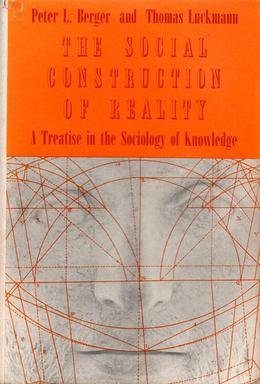Table of Contents
- The Social Construction of Reality
- The Role of Language in Social Construction
- Reality Maintenance and Change
- Berger and Luckmann’s Legacy in Sociology
- Conclusion
In the landscape of sociological theory, Peter L. Berger and Thomas Luckmann stand out for their influential work on the social construction of reality. Their ideas have become fundamental to understanding how knowledge, belief systems, and societal structures are formed and maintained. By exploring the nature of reality and how it is socially constructed, Berger and Luckmann provide insights that challenge the objective nature of the world and reveal how social actors create meaning within their lives. This article will examine the key ideas presented by Berger and Luckmann, focusing on their notion of social constructionism, the role of language, and the institutionalization of knowledge.
The Social Construction of Reality
Berger and Luckmann’s primary contribution to sociology comes from their groundbreaking 1966 work The Social Construction of Reality. In this work, they argue that reality, as we perceive it, is not an objective entity but a product of human interaction. They propose that individuals and groups actively create and shape their world through social processes, making reality subjective and socially constructed.
Key Components of Social Constructionism
- Subjective vs. Objective Reality: Berger and Luckmann differentiate between subjective reality (the world as it is personally experienced by individuals) and objective reality (the external world as it is accepted by society). According to them, subjective realities are shaped by personal experiences, but they are influenced by the objective reality that individuals inherit through socialization.
- Socialization: Socialization plays a critical role in how individuals come to accept the constructed reality of the society in which they live. Through primary socialization, individuals internalize the norms, values, and roles that shape their perception of the world. Secondary socialization, which occurs later in life, further reinforces and modifies this perception as individuals engage in new social roles.
- Externalization and Objectification: In the process of creating reality, individuals engage in externalization, where subjective ideas are projected into the world. Over time, these externalized ideas become objectified—accepted as “real” and part of the external reality that is shared by society. Objectified realities become taken for granted, and people begin to see them as natural or inevitable.
Institutionalization of Knowledge
One of the central ideas proposed by Berger and Luckmann is the institutionalization of knowledge. They argue that the reality individuals experience is solidified through institutions, which serve as frameworks for behavior and understanding. Institutions are powerful because they stabilize the social order and maintain the continuity of socially constructed realities over time.
- Institutions and Habitualization: Institutions form when patterns of behavior become habitualized, meaning they are repeated over time and taken for granted. These habitualized actions then become part of an institution, which governs behavior in predictable ways. Institutions create a stable environment by providing structure and reducing the unpredictability of human interaction.
- Legitimation: For an institution to maintain its status and influence, it requires legitimation. Legitimation is the process by which knowledge, norms, and values are justified and validated. This process involves the creation of myths, symbols, and narratives that explain why the institution is necessary and valuable. Over time, these legitimating structures reinforce the stability of the institution, making it more resistant to change.
The Role of Language in Social Construction
A central component of Berger and Luckmann’s theory is the role of language in constructing and sustaining reality. Language is not merely a tool for communication but a fundamental mechanism through which social reality is created, transmitted, and sustained.
Get the full article AD FREE. Join now for full access to all premium articles.
View Plans & Subscribe Already a member? Log in.





